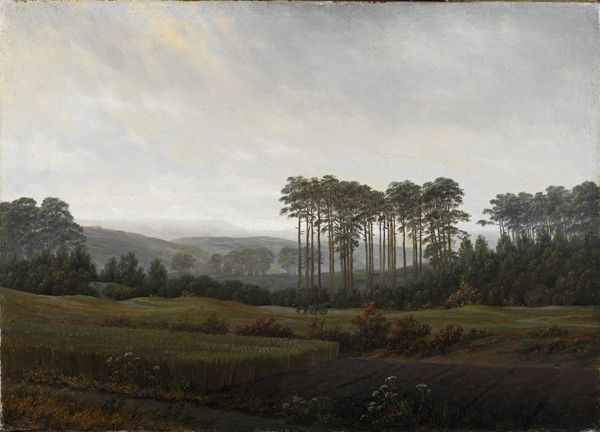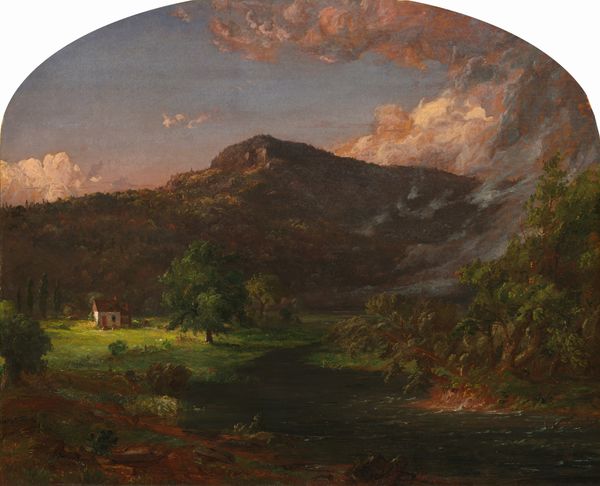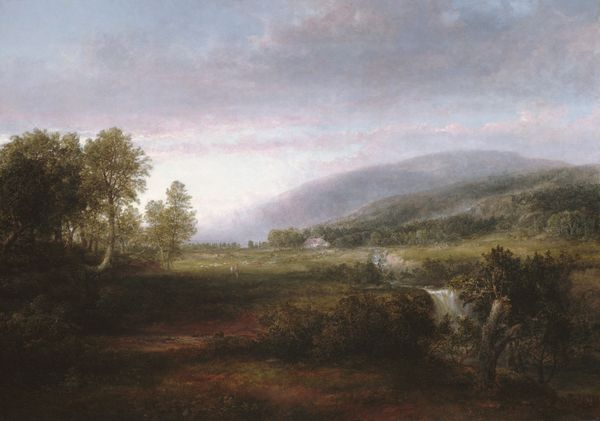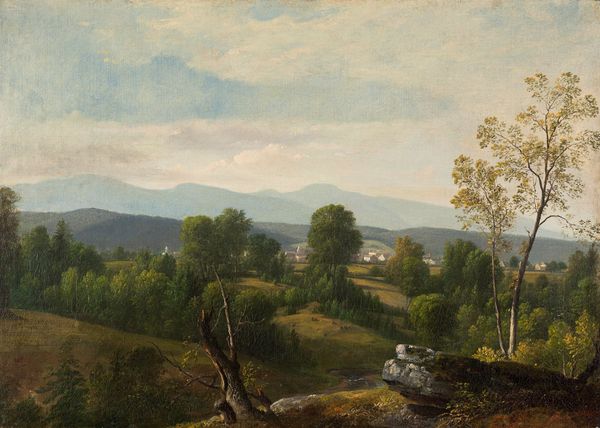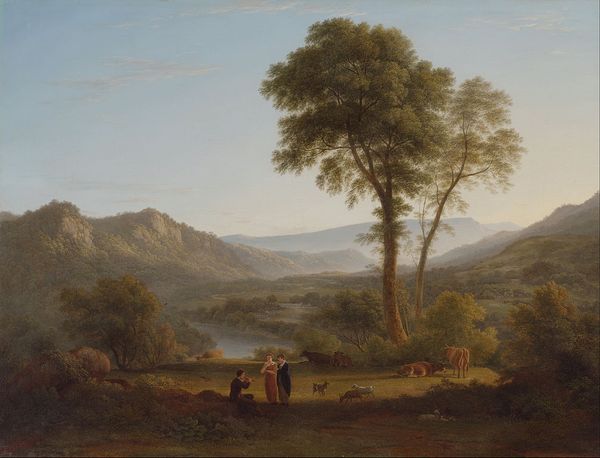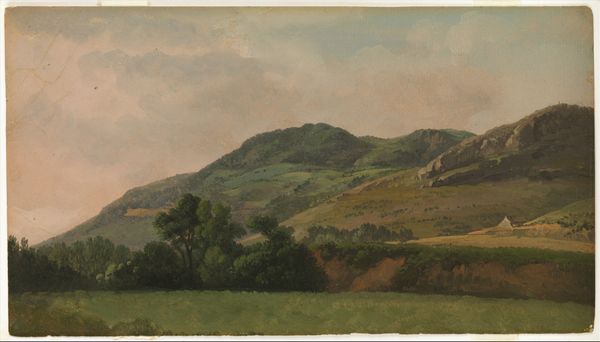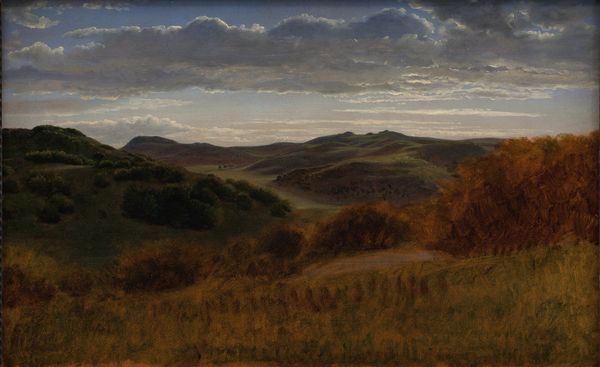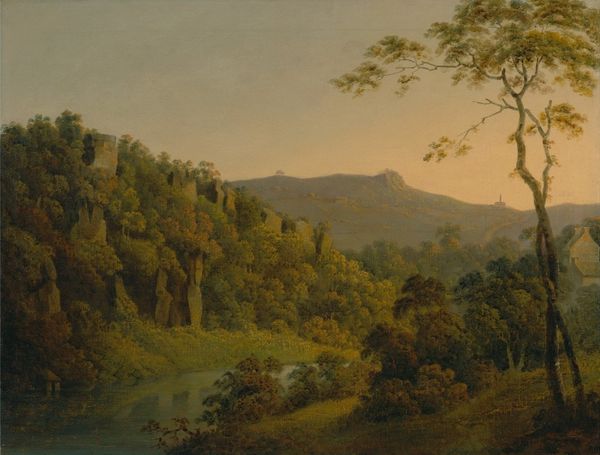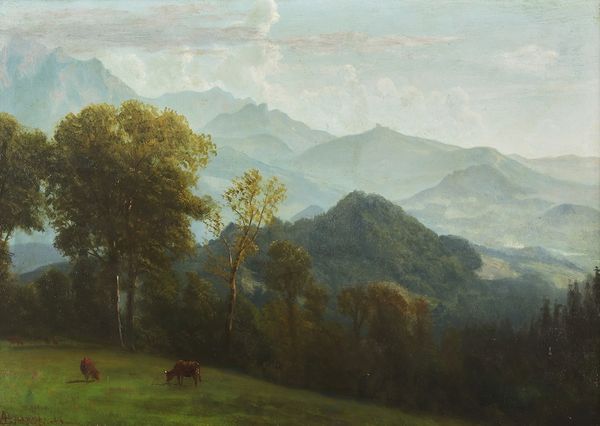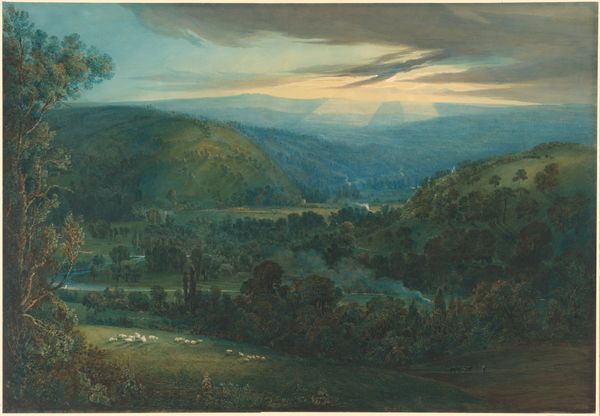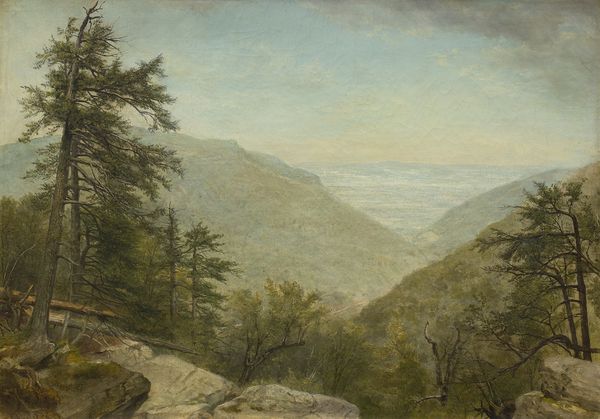
Tågen letter over skovene ved Himmelbjerget. Tidlig efterårsmorgen 1895
0:00
0:00
Dimensions: 115.5 cm (height) x 190 cm (width) (Netto)
Curator: Looking at this work by Harald Foss, "Tågen letter over skovene ved Himmelbjerget. Tidlig efterårsmorgen" – that's "Mist Lifting Over the Forests Near Himmelbjerget. Early Autumn Morning" created in 1895, done with oil paints, one gets the feeling that Denmark is a land veiled in gentle mystery, don't you think? Editor: Absolutely. It’s breathtaking. That light… It’s as though I can feel the damp chill of the morning air, just before the sun breaks through. There's a wistful quietude to it. Curator: Foss was a proponent of "plein-air" painting, meaning he worked outside, directly in front of the landscape. In the late 19th century, there was an increasing turn towards representing one’s immediate sensory experience within nature. Painting became not just about representation but about conveying atmosphere and the sensation of being in a particular place. Editor: That’s palpable here, isn't it? Himmelbjerget itself is almost lost in the distance. The eye is led more toward the gentle uncurling of mist through the forest. Curator: Indeed. What's interesting is Himmelbjerget’s, meaning "Sky Mountain," symbolic weight. It had, in previous decades, become a site of patriotic celebration. Its geography, being a high point, had been exaggerated in order to fashion it into a symbol for Denmark. Foss subtly shifts away from that monumental, nationalistic portrayal. He doesn't erase it but nearly obscures the site of patriotic gathering with fog and shadow. Editor: It feels like he’s prioritizing the experience of the solitary wanderer, doesn’t it? One small figure confronting a vast landscape. You almost wonder about their relationship with nature. It is about being subsumed in a sensation bigger than yourself, but maybe on a more personal level than, say, the nationalistic pageantry of a mountain summit. Curator: Perhaps. There's certainly an element of romanticism here, especially given that the style itself is closely related to Impressionism. Both artistic schools took nature, its transience and overwhelming character, as a major motif. Editor: Foss captures such a distinct mood... melancholic, but ultimately serene. As if, despite everything, the world breathes with a soft, persistent beauty. Curator: Agreed, and in revisiting Foss, hopefully, we begin to re-examine and gently unsettle certain national narratives through attention to new sensory experiences, captured on canvas over a century ago.
Comments
No comments
Be the first to comment and join the conversation on the ultimate creative platform.

